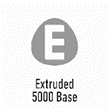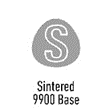Snowboards
Undoubtedly, the most important element of snowboarding is the snowboard. Its proper selection will make it easier for beginners to start and progress quickly, and for advanced players it will allow them to discover new areas of this sport
PURPOSE OF THE SNOWBOARD
practically all snowboard manufacturers describe the purpose of snowboards in a clear and similar way, which greatly facilitates their selection in this respect. This parameter generally describes the behavior of snowboards in specific terrain conditions. Some of the best boards are: Jones, Slash, Nidecker, Yes.
 All Mountain – universal, relatively easy boards, for riding on groomed slopes as well as off-piste in not very difficult terrain. Designed mainly for beginners and intermediate snowboarders who are at the stage of finding their riding style. However, there are also really high-end boards in this category for those who want to have one board for everything.
All Mountain – universal, relatively easy boards, for riding on groomed slopes as well as off-piste in not very difficult terrain. Designed mainly for beginners and intermediate snowboarders who are at the stage of finding their riding style. However, there are also really high-end boards in this category for those who want to have one board for everything.
 Freestyle – snowboards for riding in snowparks, relatively soft with a symmetrical shape and stiffness, also called Twin-tip. Riding on a switch is standard on this type of board. By moving the stance back as far as possible, you can conventionally make a directional board out of it. However, it should be remembered that due to its symmetrical construction, it will not behave like a typical directional snowboard.
Freestyle – snowboards for riding in snowparks, relatively soft with a symmetrical shape and stiffness, also called Twin-tip. Riding on a switch is standard on this type of board. By moving the stance back as far as possible, you can conventionally make a directional board out of it. However, it should be remembered that due to its symmetrical construction, it will not behave like a typical directional snowboard.
 Freeride – directional snowboards with a significant setback, mainly used for fast riding on groomed trails and off-piste in difficult terrain and powder. Structurally, the shorter, stiffer tail makes it easier to hold the board in turns at high speeds, while the elongated nose significantly helps when surfing in powder.o znaczącym setbacku,
Freeride – directional snowboards with a significant setback, mainly used for fast riding on groomed trails and off-piste in difficult terrain and powder. Structurally, the shorter, stiffer tail makes it easier to hold the board in turns at high speeds, while the elongated nose significantly helps when surfing in powder.o znaczącym setbacku,
 Snow Surf – short, directional, wide boards with a characteristic fish tail, designed for surfing in deep powder and in the forest due to its maneuverability. Driving a short, dynamic turn on the edge can also be very satisfying.
Snow Surf – short, directional, wide boards with a characteristic fish tail, designed for surfing in deep powder and in the forest due to its maneuverability. Driving a short, dynamic turn on the edge can also be very satisfying.
 Jibbing – relatively short, twin-tip boards with slightly rolled edges, making it easier to ride on walls, boxes and tubes. Practically, boards of this type, due to their construction, have no other use.
Jibbing – relatively short, twin-tip boards with slightly rolled edges, making it easier to ride on walls, boxes and tubes. Practically, boards of this type, due to their construction, have no other use.
 Carving – twarde, hard, directional boards with a camber profile, for really fast riding on the edge on prepared terrain.
Carving – twarde, hard, directional boards with a camber profile, for really fast riding on the edge on prepared terrain.
 Buttering – relatively short, soft, symmetrical boards for playing and performing various tricks and rotations on a flat board.
Buttering – relatively short, soft, symmetrical boards for playing and performing various tricks and rotations on a flat board.
SNOWBOARD SHAPES - this parameter describes the distribution of the rider's center of gravity in the longitudinal axis of the board. There are two basic shapes: symmetrical, commonly known as Twin Tip, and Directional.

Twin Tip – symmetrical snowboards, the front and back of the board have the same length, the center of gravity is centrally distributed, the shape is mainly used in Freestyle and Jibb snowboards.

Directional – Są These are directional snowboards with an elongated nose in relation to the tail. The degree of this asymmetry is determined by the setback, usually given in millimeters. Boards of this type are best for aggressive skiing on the edge on groomed slopes and off-piste in powder. This shape is most often used in Freeride snowboards

Wide snowboards – these are deliberately widened snowboards for snowboarders who use size boots 45 and biger. In this way, snowboards of this type do not limit in any way the style of their riding of such a person.
SNOWBOARD CONSTRUCTION - the changes that have taken place in the construction of snowboards over the years testify to the continuous development of the snowboard industry. The beginnings of snowboarding are classic camber. Currently, almost every manufacturer offers their custom constructions, so there is a lot to choose from. And this is one of the most significant factors, defining the properties of boards and their selection for the specific requirements of each rider.

Camber – is a traditional construction, the characteristic feature of which is that during the ride, practically the entire surface of the board is in contact with the snow, as well as the active edge during turns, which provides the board with excellent grip. Boards with this construction are relatively hard, with a lot of pop, which guarantees their stability at higher speeds, but they require high technical skills from riders. The turns must be cut precisely, otherwise the so-called catching the edge can result in a painful fall or even injury. Construction used to build boards such as: freeride, freestyle, race.

Power Camber – an innovative version of the traditional Camber type profile developed by Jones, with all its advantages, but without the "edge-catching" effect. The turning radius of the board narrows towards the ends of the board and the edges at the point of contact with the ground are raised by one degree. This chamfering of the profile releases the edges where it likes to catch on the ground. The result is a traditional solid pop profile and directional camber stability with a looser, less grippy boardfeel.

Surf Rocker - A custom rocker tip designed by surfer Chris Christenson for Snow Surf boards. The rocker starts just in front of the front bindings and the tail of the board rises just behind the rear bindings. When you put weight on the tail of the board, the nose emerges easily from even the deepest snow.

Clasic Rocker – commonly known as a banana. Snowboards with such a profile have an upturned nose and tail, which ensures freedom of riding, maneuverability and performing tricks on a flat board with virtually no edge catching. The downside of this solution is poor stability at higher speeds, which clearly defines the purpose of this type of snowboard.

Flat – Totally flat construction used mainly in Freestyle boards. Such a windowsill.

Hybrid – practically every manufacturer has its own constructions combining several traditional profiles. As a result of such marriages, more or less successful constructions are created, usually used by experienced riders. Before buying this type of board, it is worth getting acquainted with the possibilities they offer, e.g. by contacting the manufacturer or distributor of a given snowbrand.
BASE – this is the element responsible for the speed achieved by the board. The top-class base offers the highest speeds, but requires frequent care and boards with such a base are among the most expensive.

extruded – base used in cheaper models of boards or in those that do not require the highest speeds. Easy to maintain and repair.

sintered – this base class has an internal division. The higher the number, the higher the class (7000, 9000, 9900). These are fast and ultra-fast bases that require quite frequent maintenance to use their 100% potential.
SNOWBOARD FLEX – called the stiffnessof the snowboard. The soft ones are easy to ride, and usually addressed to beginner snowboarders. They don't allow you to drive fast, but they make learning much easier. Boards with medium and high hardness offer better ride stability, precision in handling and cutting turns, excellent edge grip, provide better driving dynamics and higher final speeds. As you can easily guess, they require higher skills from their users. This parameter can be described in two ways:
a/ on a scale from 1 to 10 where the higher the number, the stiffer the board
b/ descriptively - soft, medium, hard.

